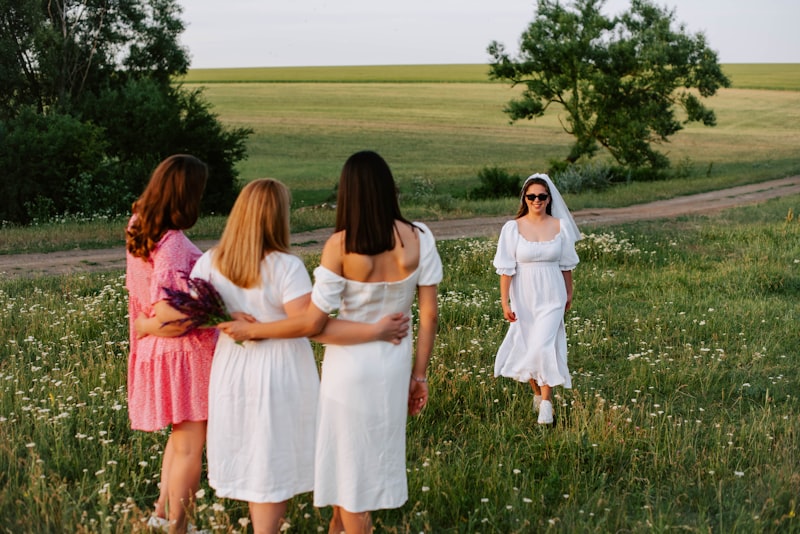Rituals and Attire: The Cultural Significance of Bridal Wear
Rituals and Attire: The Cultural Significance of Bridal Wear
Understanding the Rituals and Attire in Bridal Wear
Bridal wear is not just a piece of clothing; it embodies deep cultural significance and traditions that have evolved over generations. Across various cultures, the rituals associated with bridal wear highlight the importance of love, unity, and heritage. In this article, we will explore the intricate relationship between rituals and attire, delving into the cultural significance of bridal wear around the world.
The Historical Context of Bridal Wear
Bridal wear has a rich history that dates back centuries, with each culture presenting its unique attire that signifies various rituals. For example, in Western cultures, the white wedding dress symbolizes purity and new beginnings, a tradition popularized by Queen Victoria in the 19th century. Conversely, traditional Indian bridal wear often includes vibrant colors like red, symbolizing prosperity and fertility.
Bridal Wear Across Different Cultures
The diversity in bridal wear around the world reflects the rich tapestry of cultural traditions. Here's a brief overview of how bridal attire varies across cultures:
| Culture | Bridal Attire | Cultural Significance |
| Western | White wedding dress | Symbolizes purity and new beginnings |
| Indian | Red saree or lehenga | Represents prosperity and fertility |
| Chinese | Red qipao or cheongsam | Signifies good fortune and happiness |
| African | Colorful kente cloth or gele | Celebrates heritage and community |
The Rituals Associated with Bridal Wear
Rituals are integral to the significance of bridal wear. They vary from one culture to another, each carrying unique meanings. Here are some notable rituals associated with bridal wear:
The Western Wedding Ceremony
In Western weddings, the ritual of wearing a white dress during the ceremony has remained a standard practice. This dress is often accompanied by a veil, which symbolizes modesty. The bride's journey down the aisle is one of the most anticipated rituals, marking her transition from singlehood to marriage.
Indian Wedding Traditions
Indian weddings are known for their vibrant colors and elaborate rituals. The bride traditionally wears a red lehenga, adorned with gold embroidery, which represents her cultural heritage. Rituals such as the "Saat Phere," where the couple circles a sacred fire seven times, emphasize their commitment to each other. The bride's attire is often complemented by intricate jewelry that holds cultural significance, like the mangalsutra, symbolizing marital fidelity.
Chinese Wedding Customs
In Chinese culture, red is the color of joy and prosperity. Brides often wear a red qipao, representing happiness and good fortune. The wedding ceremony includes the "tea ceremony," where the couple serves tea to their elders to show respect, further emphasizing the importance of family and cultural ties.
The Symbolism of Colors in Bridal Wear
Colors play a vital role in bridal wear, with each hue carrying specific meanings across cultures.
White
In many Western cultures, white is synonymous with purity and innocence. This is why brides typically choose white gowns for their ceremonies.
Red
In cultures such as Indian and Chinese, red is associated with joy, success, and fertility. It is considered auspicious, and brides are often decked in red during their weddings.
Black
While black is traditionally considered a color of mourning in some cultures, in others, it represents elegance and sophistication. In modern weddings, black attire is becoming increasingly popular for both brides and grooms.

Modern Trends in Bridal Wear
With the changing landscape of fashion and societal norms, bridal wear has also evolved. Today, many brides opt for contemporary styles that blend tradition with modernity. For instance, some brides choose to wear colored gowns or suits, breaking the traditional norms of white dresses.
Moreover, with the rise of inclusive fashion, designers are catering to diverse body types, ethnicities, and gender expressions. This change reflects a more accepting approach to love and marriage.
Tips for Choosing Bridal Wear
When selecting bridal wear, consider the following tips to ensure that it resonates culturally and personally:
- Reflect on Your Heritage: Incorporate elements from your cultural background to honor your family traditions.
- Comfort is Key: Choose attire that reflects your personality and makes you feel comfortable throughout the wedding day.
- Consider the Venue: Ensure that your bridal wear is appropriate for the venue and style of your wedding.
- Plan Ahead: Start your search early, as custom designs may take time to prepare.
- Budget Wisely: Set a budget that includes alterations, accessories, and preservation of your attire post-wedding.
Conclusion
Rituals and attire are deeply intertwined, capturing the essence of culture and traditions in bridal wear. Whether it's the stunning white dress of a Western bride or the vibrant red ensemble of an Indian bride, each piece tells a story of love and heritage. Understanding the cultural significance of bridal wear not only enriches your wedding experience but also honors the traditions of those who came before you.
As you embark on your journey towards the altar, remember to choose attire that resonates with you personally while respecting your cultural roots. This balance will make your wedding day even more special and meaningful.
In summary, bridal wear is much more than just clothing; it serves as a cultural emblem of love, unity, and personal identity. Take the time to explore the diverse customs surrounding bridal wear and create a meaningful experience that reflects your unique story.
